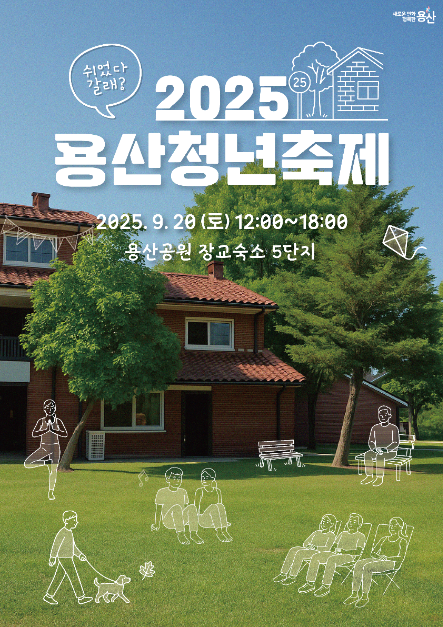Yongsan Youth Festival (용산청년축제)
6.0Km 2025-10-23
221 Seobinggo-ro, Yongsan-gu, Seoul
+82-10-9771-2090
The Youngsan Youth Festival, a wellness-themed event, invites both youths and residents to take the initiative for their well-being by achieving a balanced state of mental, physical, and social health. During the festival, visitors can enjoy dance performances, shows by popular singers, magic shows, traditional Korean music ensembles, and a commemorative ceremony featuring congratulatory remarks.
ABC-Mart - Hongdae Branch [Tax Refund Shop] (ABC마트 홍대점)
6.0Km 2024-04-23
17, Hongik-ro, Mapo-gu, Seoul
-
Olive Young - Hongdae Sageori Branch [Tax Refund Shop] (올리브영 홍대사거리점)
6.0Km 2024-06-26
140 Yanghwa-ro, Mapo-gu, Seoul
-
ID Clinic Hongdae (홍대 아이디의원)
6.0Km 2025-10-23
10th Floor, H-CUBE, 140 Yanghwa-ro, Mapo-gu, Seoul
Hongdae ID Clinic is a specialized clinic of the ID Group, backed by over 20 years of expertise in facial contouring surgery, skin treatments, and petit procedures. With a deep understanding of facial anatomy, we provide safe and precise treatments, offering a wide range of customized solutions such as lifting, Botox, fillers, and lasers to create natural and harmonious beauty.
Artbox - Seogyo Branch [Tax Refund Shop] (아트박스 서교)
6.0Km 2024-04-18
#101, and #103, 19, Hongik-ro, Mapo-gu, Seoul
-
SEOUL SHINSEGAE EYE CENTER (서울신세계안과의원)
6.0Km 2025-10-23
3rd–4th Floors, Y-Square, 52 Dobong-ro, Gangbuk-gu, Seoul
SEOUL SHINSEGAE EYE CENTER is a premium clinic with specialists from Korea’s top hospitals. With AI-based precision systems and an advanced surgical center, we offer safe, customized care. Sterile ORs, 7-stage purification, and age-specific checkups ensure lifelong family eye health.
Tonymoly - Hongdae Branch [Tax Refund Shop] (토니모리 홍대)
6.0Km 2024-04-23
1, Hongik-ro 3-gil, Mapo-gu, Seoul
-
Line Friends Flagship Store - Hongdae Branch [Tax Refund Shop] (라인프렌즈홍대플래그십스토어)
6.0Km 2024-07-25
141, Yanghwa-ro, Mapo-gu, Seoul
-
Toxnfill Clinic - Hongdae Shinchon Branch [Tax Refund Shop] (톡스앤필의원 홍대신촌점)
6.0Km 2024-06-26
141, Yanghwa-ro, Mapo-gu, Seoul
-


![ABC-Mart - Hongdae Branch [Tax Refund Shop] (ABC마트 홍대점)](http://tong.visitkorea.or.kr/cms/resource/33/2890333_image2_1.jpg)
![Artbox - Seogyo Branch [Tax Refund Shop] (아트박스 서교)](http://tong.visitkorea.or.kr/cms/resource/62/2889062_image2_1.jpg)
![Line Friends Flagship Store - Hongdae Branch [Tax Refund Shop] (라인프렌즈홍대플래그십스토어)](http://tong.visitkorea.or.kr/cms/resource/19/3314119_image2_1.jpg)
![Toxnfill Clinic - Hongdae Shinchon Branch [Tax Refund Shop] (톡스앤필의원 홍대신촌점)](http://tong.visitkorea.or.kr/cms/resource/33/3313433_image2_1.jpg)
 English
English
 한국어
한국어 日本語
日本語 中文(简体)
中文(简体) Deutsch
Deutsch Français
Français Español
Español Русский
Русский